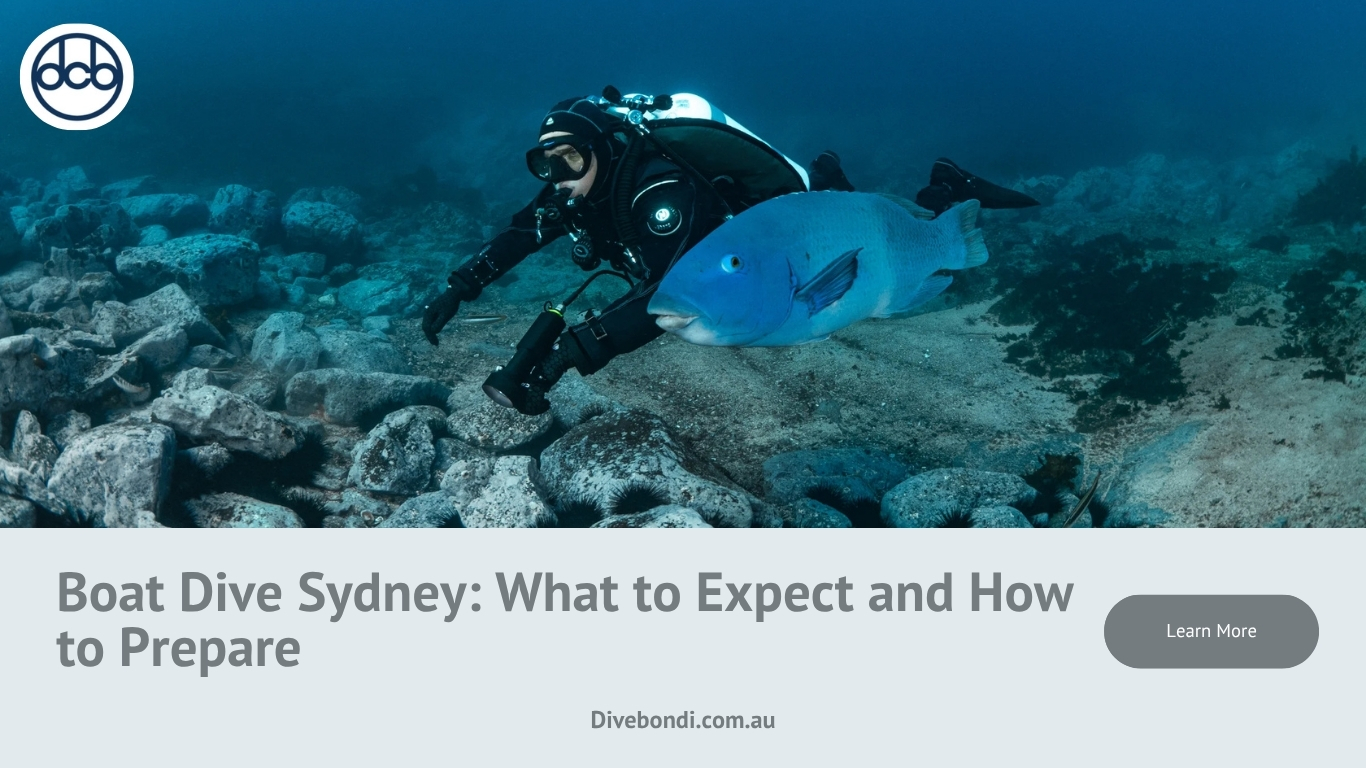If you're looking for a unique way to explore the underwater world in New South Wales, a boat dive Sydney experience offers an unforgettable adventure.
Are you a seasoned diver?
Do you just want to build your logbook?
Diving from a boat opens up access to remote and stunning dive sites that are often out of reach from shore. Boat dives give you the chance to experience the underwater beauty of Sydney in a whole new way.
But how does it differ from a typical dive?
What should you expect, and how can you prepare to make the most of the day?
This guide will walk you through what to anticipate on a Sydney boat dive and how to get yourself ready, both mentally and physically.
Why Choose a Boat Dive in Sydney?
One of the main advantages of a boat dive in Sydney is access. While shore diving is convenient, it can limit you to sites that are relatively close to the coastline and accessible by foot. Boat diving unlocks sites like Magic Point, The Gap, Long Reef, and the wreck of the SS Tuggerah. These are all known for their biodiversity, clearer visibility, and unique topography.
Additionally, boat dives typically offer easier entry and exit for divers, especially when compared to navigating rocky shorelines or dealing with surf. The dive operator usually provides a thorough briefing. In most cases, a dive guide is present to help navigate the site and point out key marine life.
What to Expect on the Day
Arriving at the marina or dive shop early is essential, often around 6:30–7:30 AM. It depends on your operator and the site schedule. After signing in and reviewing any documentation, you’ll load your gear onto the dive boat. It is usually a rigid inflatable boat (RIB) or a more spacious custom dive vessel. Some operators may assist with loading and setup, especially for first-time boat divers.
Once onboard, expect a safety briefing and an overview of the dive site and conditions. Travel times to dive sites vary but are typically within 20–45 minutes from departure points like Rose Bay, Port Botany, or Manly. The boat may rock depending on ਪਾ weather and swell. So, if you’re prone to seasickness, consider taking motion sickness medication before boarding.
You’ll usually do two dives during the outing, with a surface interval between them. Some boats provide light refreshments or hot drinks during the interval. But it's a good idea to bring your own water and snacks. Between dives, enjoy the camaraderie of fellow divers and take in views of Sydney’s picturesque coastline.
Preparation: Gear, Fitness, and Mental Readiness
Boat dives generally require the same gear as shore dives. First, ensure your gear is organized and in good working condition ahead of time. Packing everything in a large, waterproof dive bag will make transporting and stowing your gear onboard easier.
You may want to include:
A wetsuit appropriate for the season (5mm in summer, 7mm in winter)
Mask, snorkel, fins, and boots
BCD and regulator
Dive computer and compass
Safety sausage (SMB) for surface signaling
Seasickness medication (if needed)
A towel, water bottle, and snacks
Fitness plays a role, too. Boat diving often involves backrolling or giant-stride entries and climbing a ladder to reboard the vessel. While not overly demanding, general cardiovascular fitness and leg strength will make your day more enjoyable.
Mentally, it’s helpful to review dive plans and brush up on your buoyancy and navigation skills. If it’s been a while since your last dive, consider doing a refresher course or a shore dive Sydney session first to rebuild your confidence in a more controlled setting.
Safety First: Diving Conditions and Weather
Sydney’s diving conditions can vary depending on wind, tide, and swell. Before your dive, your operator will assess the site for safety and visibility. It’s not uncommon for the boat captain to change dive locations on the fly if conditions shift unexpectedly. Flexibility is key.
Visibility in Sydney ranges from 5 to 25 meters, with summer and early autumn typically offering the clearest water. Temperatures range from 15°C in winter to around 22°C in summer, so thermal protection is crucial.
Your dive guide or instructor will emphasize safe practices like controlled descents and ascents, buddy checks, and maintaining good buoyancy. Always listen to the dive briefing carefully, and don’t be afraid to ask questions if anything is unclear.
Environmental Responsibility
Being on a boat means sharing space with others. Keep your gear tidy and in your designated spot. Avoid rinsing your mask or spitting over the side while near others. Follow the lead of experienced divers and the crew when it comes to boat etiquette. It makes the trip smoother and more enjoyable for everyone.
Boat diving in Sydney also means interacting with delicate marine ecosystems. Avoid touching or disturbing marine life, keep your fins off the bottom to protect fragile reef structures, and practice neutral buoyancy to minimize environmental impact.
As GUE-trained divers often advocate, mindfulness and minimalism in diving practices help preserve the dive environment for the future.
Final Thoughts
If you're a visiting scuba enthusiast or a local looking to take your diving to the next level, boat dive Sydney is something truly special. The opportunities are as diverse, including majestic grey nurse sharks at Magic Point and deep shipwrecks and vibrant sponge gardens.
Proper preparation, a respect for safety protocols, and a commitment to environmental stewardship are essential. It will ensure that your boat diving journey in Sydney is not just memorable but also safe and sustainable. With Dive Centre Bondi, passionate divers will have a magnificent opportunity to explore the marine life with enthusiasm.

